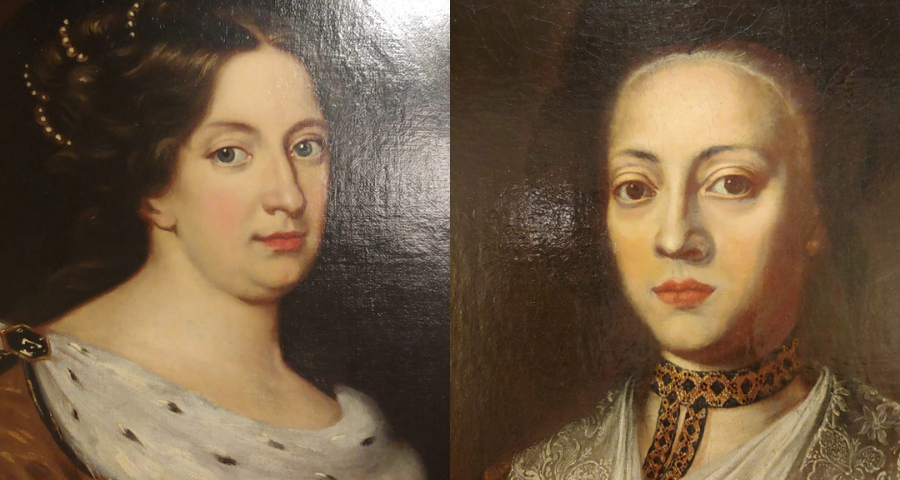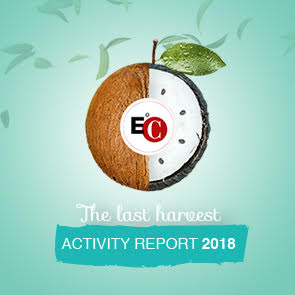The market and the temple/19 - The Counter-Reformation was also a decisive time for the economic and social culture of Italy and Southern Europe.
By Luigino Bruni
Published in Avvenire 15/03/2021
The nuns gave a high sense of being imprisoned victims of even extreme penances, and for the Church and society those locked up but 'productive' lives had a real value.
The age of the Counter-Reformation was a decisive time for the economic and social culture of Italy and the other countries of southern Europe. Something was interrupted in the evolution of the ethics of trading that had made cities like Florence, Venice and Avignon extraordinary places of economic and civil wealth. Among the many faces of the modern age there is also that of women, in particular that of female monastic life, little known because it was hidden, and even deliberately kept hidden.
The Council of Trent had reintroduced highly strict enclosure for nuns. Roman bishops and congregations tightened controls and regulations on female monasteries. Faced with a reformed Church which announced salvation by grace alone, and criticized consecrated life to the point of abolishing it, greatly reducing the role of the sacraments, and radically refuted the theology of merits and therefore of indulgences, abolishing the concept of Purgatory ... the Church of Rome strongly relaunched the importance of human work for salvation, multiplying the institutes dedicated to consecrated life and strengthening the pastoral care of the sacraments, including that of confession, putting merit, indulgences and Purgatory at the center.
In this great theological battle, the first and most numerous victims were once again, women, especially those imprisoned in monasteries and convents. A huge movement, if we think that with choristers, converse nuns, and third orders in some Italian regions, put together, nuns reached a 10-15% of the "adult" (that is, at the time, over twelve years old) female population in the seventeenth century. Hence, understanding a little about the lives of these women also means understanding more about the history of Europe and our present as well.
However, how is there a relationship between the life in the female monasteries and the economy? What first comes to mind is the concept of ora et labora, but it is not the most interesting or correct one in this case. Instead, paradoxically, economic logic largely entered the life of the nuns in spirituality, asceticism and mysticism. The Middle Ages had already produced its own "economic religion". The paid penances of the monks, where each sin corresponded to a penalty with a relative tariff, became marketable as a sort of commodity after the thirteenth century. Penance was objectified and separated from the sinner, therefore a sin or culpability could be paid for by someone else than the actual guilty person. This was the beginning of the trade of prayers, pilgrimages, up to the famous market of indulgences.
The Counter-Reformation experienced a strong recovery in the economic-retributive dimension of Catholicism, albeit with important innovations. One directly concerned women. While, in fact, in the Middle Ages the actors of the religious trade were almost exclusively male, in the early modern age women were the first operators of this strange version of the Catholic religion. The main domains of these original stock exchanges were the monasteries and convents, especially the female ones, and so Latin capitalism became divine. Let us look at how it happened. Everything revolves around a particular (and extravagant) interpretation of the meaning and use of human pain, read in relation to the pain of Christ. We know that in the New Testament there is a tradition that reads the passion and death of Jesus as the payment of a price to the Father to gain the forgiveness for our sins. This idea of a God-Father who needed the blood of his Son to be "satisfied" (because only a price of infinite value could pay off an infinite debt), spanned the first millennium and was put into system by Saint Anselm of Aosta.
It remained, however, a mere matter for theologians, until the Counter-Reformation turned it into something more spectacular and unexpected in the monasteries, a column of the Baroque age. The ancient theology of the atonement was transformed into a real culture of atonement, which pervaded religious practices and popular piety. Human pain thus became the main currency for paying one's own and others' debts/faults. The trade of indulgences and pilgrimages of the Middle Ages, became the trade of pain in the age of the Counter-Reformation, in the form of penances, humiliations and mortification. Mainly a female pain. The language of the manuals for confessors, which exploded during this time and age, reveals this turning point: "penal works", "satisfactory works", "reparation", "souls-victims". The confessional became the main mechanism of transmission for this trade in pain.
The following expression stands out in particular: vicarious suffering. That is, one begins to think (and act) that one could suffer for the benefit of others, that someone could pay himself to atone for the sins of others, while still alive or in Purgatory. On the basis of some quotations from scripture (for example, from the Deutero-Pauline letters to the Colossians: «I fill up in my flesh what is still lacking in regard to Christ's afflictions, for the sake of his body, which is the church» Col 1,24), and an original use of the concept of Church as a "mystical body" (where what happens to one member affects all the others), an immense market for pain and suffering was created. Hence, while Northern Europe developed "real" markets, in the South, economic concepts were being applied to both religion and women. An ingredient of this highly original trading system was the so-called "Treasure of Merits" of Christ and Mary, merits so great as to overcome the debt of human sins; thus the Church could "sell" the surplus part of that treasure to remit other debts of sinners, through indulgences. But the theological stroke of genius was to think that penances and the offering of human sufferings could increase the Treasury and therefore the surplus part making it available for living sinners and even more so for those in Purgatory: «God wishes for debt to be paid» (The Divine Comedy, Purgatory X,108). That is how female monasteries were transformed into "production centers" of this spiritual wealth: with the objective to increase the Treasury with and through their pain. As Veronica Giuliani loved to put it: «Many souls go to hell because there is no one who will a sacrifice for them».
Hence, the proliferation increasingly extreme penances in female monasteries, often ordered by confessors thanks to the enormous power they held over the nuns. However, the system reached its peak when the nuns internalized the value of their pain and therefore began self-inflicting humiliations and various means of mortification on themselves, thereby procuring in perfect good faith all sorts of pain in order to save themselves and above all others. A perfect balance: the nuns attributed a meaning and value to their being "recluse victims" because they interpreted their sacrifice as an offer pleasing to both God and men; while the Church and society attributed a social and religious value to those confined but also "productive" existences. Reading the biographies or autobiographies written by nuns from that era make quite an impression: «The confessor agreed that two hours of sleep a night, with a torn sheet as my only blanket, would be sufficient. Giving her a new sackcloth fitted with more than five hundred quills and an iron-tipped whip, and he did not object to the fact that Mary Magdalene wore serrated chains on her arms and legs» (Anne J. Schutte, Horrid and strange penances, p.159; 266). In another biography: «He received a similar answer from God when, during a night in Christmas time, Sister Margerita asked to be admitted between the ox and the donkey to adore the Christ Child: there is no place for you in the crib, because compared to you the animals have much greater and more meritorious qualities» (Mariano Armellini, "Margherita Corradi, Benedictine nun" (1570-1665), 1733). Furthermore, in the famous story of Sister Maria Crocifissa: «Before lunch, while the sisters were in the refectory, I went in like a Beast, that is chained on all fours, kissing the feet of the sisters» (Francesco Ramirez, 1709).
The spiritual books for nuns are another essential source of information: «As soon as you wake up, imagine that you are an offender chained, and led to the court to be judged, or a leper, full of wounds; and with these or other similar thoughts in your mind, proceed to get dressed» (Giovanni Pietro Pinamonti, The religious woman in solitude/ La religiosa in solitudine, 1697, p.31). And the following words can be read in a very widespread Handbook for confessors, written in the eighteenth-century by Alfonso Maria de' Liguori: «Hence, penance must not only be a medicinal remedy for a future life, but also a penal and vindictive one for a past life. Entering a congregation is generally a penance useful to everyone» (Alfonso Maria de’ Liguori, The Wise Priest/ Il sacerdote provveduto, p. 240). Entering a congregation and becoming part of it is therefore seen as a form of penance that is useful to all. These ideas and practices lasted for centuries, in many cases up to the Second Vatican Council. The following can be found in a text from the last century: «In the Dominican convent of Vercelli, there was, among others, a rule that forbade drinking between meals without the permission of the superior, who however rarely allowed it, inciting the sisters to this small sacrifice in memory of the thirst that Jesus suffered on Calvary» (Luigi Carnino, Purgatory in the revelation of the Saints/ Il purgatorio nella rivelazione dei Santi, ch.17, 1946). It was not easy at all for me to think about and write this article. I wrote it with the spirit with which a tombstone is written, a stele in memory of those women-victims that have almost always remained unknown. To linger in front of them, reflect and cry. And the writing, in part to apologize to them centuries later - vicarious apologies that I make as a man on behalf of other men of the past.
Human pain can make sense. Perhaps some, or many, of these nuns were greater than their destiny and the wrongful and violent theologies aimed at the bodies of women. Maybe. However, first Job and then the Gospels had told us that only idols like the blood of their faithful. The biblical God is different. Only a wrongful view of men and especially women can think of using their suffering as a currency that is acceptable to any kind of God. One last note. All this trade in blood and female pain was completely free. The Church sold indulgences for its men and asked the laity for alms to compensate for their sins: «The rule is: for the sins of avarice, alms» (Alfonso Maria de' Liguori, cit.) The religious trade that took place on the body of women was all a gift, and therefore free. Women as icons of free sacrifice, to protect them from mercenary trade. Many decades and centuries have passed since then. The nuns and sisters who enter monasteries and convents today are very different, and rarely even know these stories. Those ancient penances were eliminated by the Second Vatican Council, even if the theological idea that our pain can be a "currency" that the God-creditor of men willingly accepts, is still rooted in many Christians, and that God therefore accepts the pain of his children, thus making him worse than us. In civil and economic life, however, women still much too often continue to practice various forms of vicarious atonement, to pay in their flesh for their families and for society, while their work is still not recognized but often devalued, often in the name of giving/a gift. Very distant and different women, but their sufferings are still much too similar.








